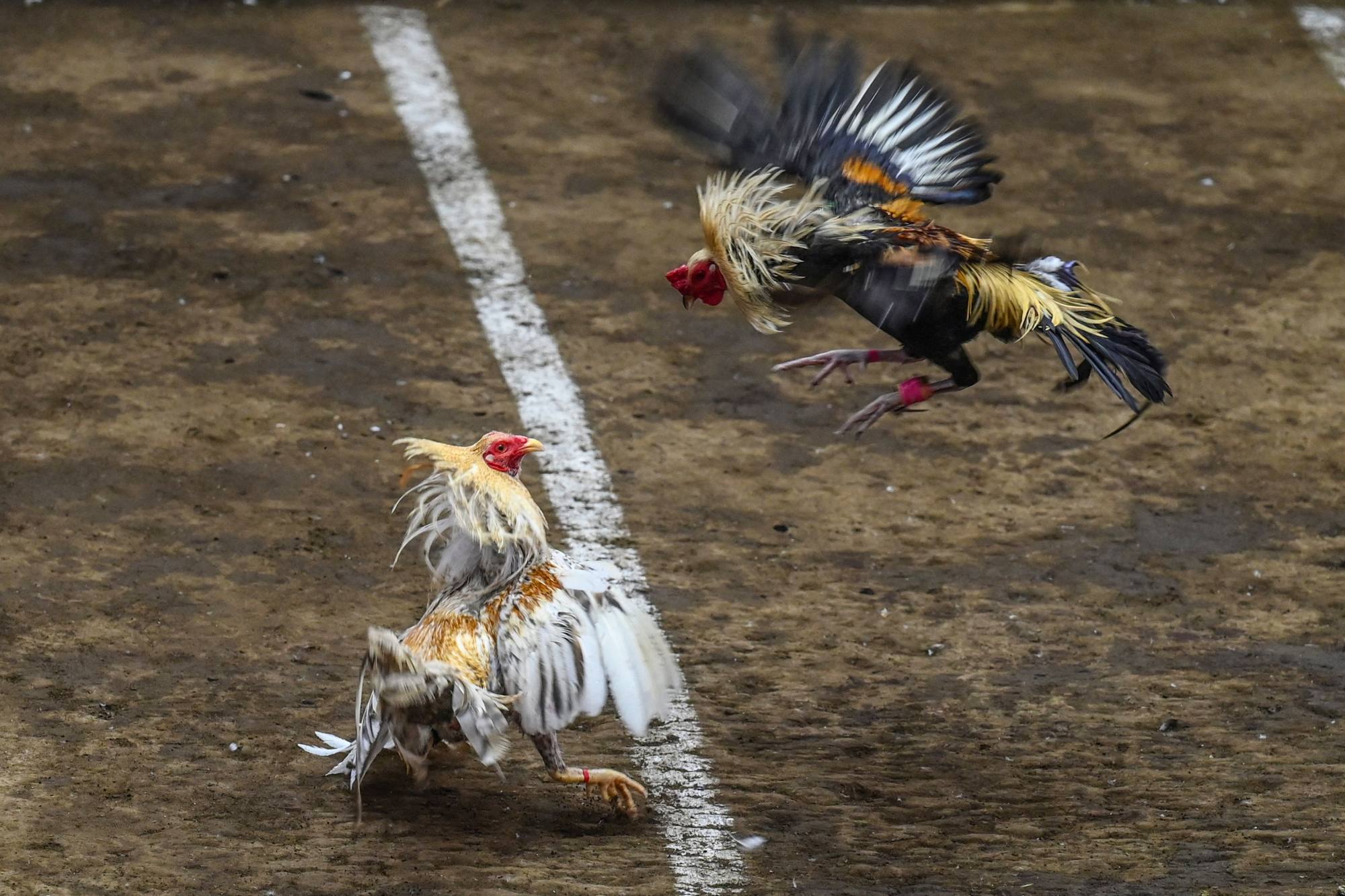
Philippine cockfights more popular than ever, despite efforts to shut down blood sport
- Shut for two years during the pandemic, traditional cockfighting arenas are getting back to full capacity across the country
- To help revive the sport and increase revenue following Covid-19, former president Rodrigo Duterte issued permits for online cockfighting
Cockfighting is hugely popular in the Philippines, where millions of dollars are bet on matches every week.
Roosters wearing bladed leg spurs go beak to beak in a brutal fight to the death, as spectators – mostly men – wager on the result.

Supporters defend the blood sport as being part of the Filipino identity and argue the birds would be eaten if they did not fight.
But opponents maintain it is cruel and should be banned, as it is in many other countries.
“In our village, more than half the residents are cock fighters,” said de la Cruz, 64, at a recent derby in San Pedro, a city south of Manila, where he fell one win short of the 1 million peso (US$17,000) champion’s pot.
The son of a long-time cockpit operator, de la Cruz said he had never held a regular job. Instead, he relied on his winnings from the roosters bred by his nephews on a large farm.
In a country plagued by inequality, cockfighting is a unique “neutral zone” where rich and poor mingle and play by the same rules, said University of the Philippines anthropologist Chester Cabalza.
Adhering to a strict honour code, spectators before the pandemic used hand signals like stock brokers to lay their bets during a match that can last less than a minute.
It is common for a single fight to draw 300,000-400,000 pesos (US$5,000-US$6,700) in bets, one aficionado said.

After each fight – there are 15 per hour – crumpled banknotes are flung towards the winning bettor.
Losers welshing on bets run the risk of being attacked.
When cockpits reopened, regulators wary of spreading the coronavirus through excessive crowd interaction ordered operators to install betting machines, so winners could collect their money from the cashier instead.
“If your cock wins, you stride out of the ring like a tough guy – you exude a macho image,” said gamefowl breeder Edwin Lumbres, thrusting his chest out for emphasis. “But if you lose, you hang your head and shuffle out like somebody whose manhood is suspect.”

Katrina Del Espiritu Santo, of People for the Ethical Treatment of Animals, is pushing for cockfighting to be banned as the birds are “forced to fight to the death”.
But the activist’s efforts have failed to gain much traction in the Philippines.
Fighting roosters are ubiquitous across the country and are prized possessions – despite their loud crowing at all hours.
A bird can cost between 3,000-15,000 pesos (US$51-US$255) depending on its parents’ win record.
Fighting fowls are kept in wire cages outside homes in urban areas or in triangular shelters on farms that dot the countryside.
As cockpits fell silent at the start of the pandemic, many small breeders could not afford to feed their flocks and were forced to sell roosters at fire sale prices – or throw them in the cooking pot.
Others admitted staging illegal fights to make ends meet.
Cuba publishes animal-welfare law – but cockfights are still permitted
Known as e-sabong, fights were held in empty arenas and streamed 24 hours a day, allowing people to place minimum bets of 200 pesos (US$3.40) per fight on their mobile phones.
The sport’s popularity exploded – and so did the earnings.
People who had never watched cockfighting before began betting, while large breeding farms saw demand for their fowl surge.
Duterte said the national government was raking in 640 million pesos (US$10.9 million) a month in fees – even as the economy tanked.
It was also lucrative for e-sabong operators.

Charlie Ang, who runs Lucky 8 Star Quest, told a Senate inquiry this year that Filipinos wagered between 1-2 billion pesos (US$17 million -US$34 million) on his platform every day, which he claimed accounted for about 95 per cent of e-sabong bets.
But the disappearance earlier in the year of 34 cockfighting workers, who are feared dead, and reports of gamblers being driven to financial ruin revealed the seedy side of e-sabong.
Some punters reportedly killed themselves, while a woman was arrested for allegedly selling her baby to pay off debts.
Under growing pressure from the public and lawmakers, Duterte reluctantly shut down online cockfighting soon before his term ended in June.
But as pandemic restrictions eased in the past year, local governments began giving traditional cockpit operators permission to resume fights – to the relief of millions of Filipinos.
“People were angry because their favourite pastime was taken away,” said Dondon Clanor, 45, a cockfighting enthusiast. “Now everyone is happy.”

.png?itok=arIb17P0)
